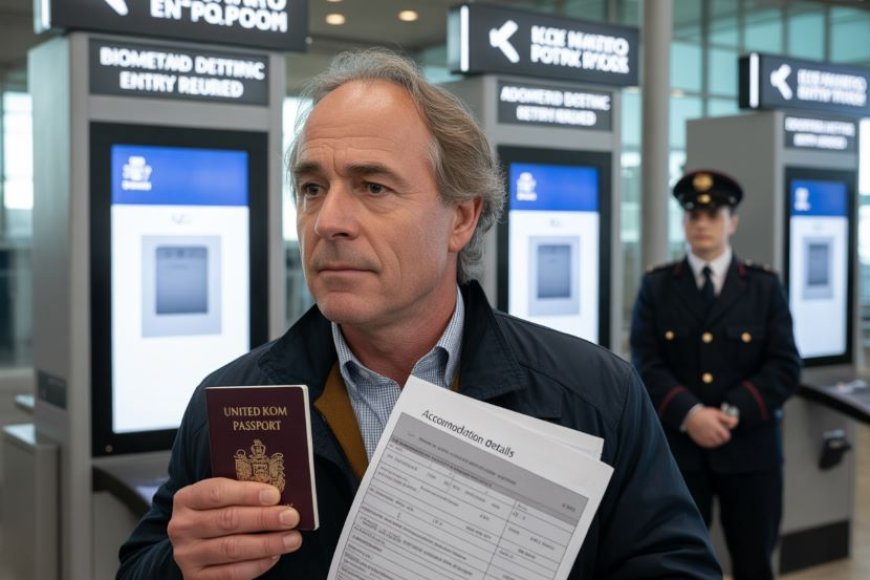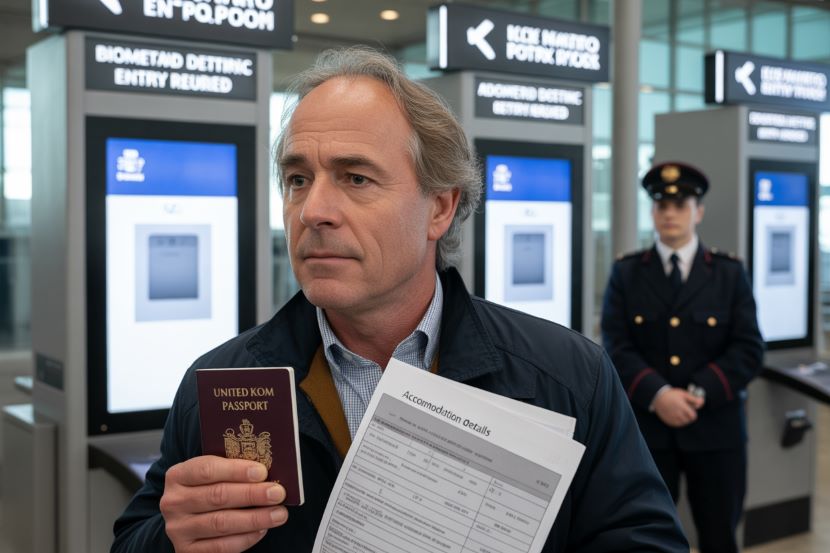New EU Border Controls for UK Travellers: Biometric Scans and Extra Checks to Be Enforced in October


Starting October 12, 2025, new and stricter post-Brexit border rules will come into force for UK tourists traveling to the European Union. These changes will impact millions of Britons planning trips to the EU, with additional checks and requirements designed to enhance security and streamline the entry process. The UK government has warned travelers to expect longer waits during busy periods, as the EU fully implements its new entry-exit system, which will require biometric scans and proof of travel details for all non-EU nationals.
As the UK is no longer part of the EU following Brexit, British passport holders will now face more rigorous checks at European borders. While these measures are expected to improve security, they could also make border crossings slower and more stressful for travelers. Here’s what every UK tourist should know before their next EU trip.
New Biometric Entry System to Be Rolled Out
Under the new system, UK travelers will be required to provide biometric data — including fingerprints and facial scans — when entering the EU. This move, part of the EU’s Entry/Exit System (EES), will replace the traditional passport stamp with digital checks, which will be implemented across EU borders, including airports, ports, and train stations. This biometric data will be stored for three years, enabling smoother entry on future visits to the Schengen Area, which includes 29 countries.
The shift to biometric checks is expected to reduce wait times over the long term by speeding up entry processes. However, the UK government has cautioned that travelers may still face delays, especially during peak travel seasons when the volume of arrivals is higher. The biometric system will be rolled out gradually, with full implementation expected by April 2026.
Key Documentation and Entry Requirements for UK Tourists
In addition to biometric data, UK travelers may be asked to provide extra documentation upon arrival. As part of the new entry requirements, tourists will be questioned at automated kiosks about the details of their trip. These questions may include:
- Proof of accommodation during the stay
- Evidence of sufficient funds for the duration of the trip
- Valid travel insurance details
- A return or onward ticket
If travelers provide satisfactory answers, they will proceed with minimal delays. However, if any responses raise concerns, they may be required to speak with a border officer for further verification. Although this level of scrutiny is expected to affect more travelers than before, authorities have emphasized that providing truthful and accurate information will make the process smoother.
The Impact on UK Business and Tourism
For UK businesses, the new border rules may present additional challenges. Increased wait times could lead to delays for business travelers who rely on timely visits to EU markets. Additionally, businesses in the travel and tourism sectors might see fluctuations in the number of UK visitors due to concerns about the additional entry requirements. Tourism agencies will need to inform potential visitors about the new rules, ensuring that they are fully prepared for their journey.
For tourists, these changes may create an additional layer of complexity when planning European vacations, as travelers must ensure they have the necessary documentation, meet the new biometric requirements, and plan for possible delays at border crossings.
What You Need to Know About the Schengen Travel Authorisation
In 2026, another significant change will come into effect: the European Travel Information and Authorisation System (ETIAS). This system will require UK travelers to apply for travel authorization before visiting the Schengen Area. The application process will involve submitting personal information, trip details, and paying a €20 fee. This process is expected to take just a few minutes but will be mandatory for all UK nationals wishing to visit Schengen countries.
ETIAS will be a key step in ensuring travelers’ security and compliance with EU immigration laws, further tightening border controls post-Brexit.
Step-by-Step Guidelines for Traveling to the EU Post-Brexit
To ensure smooth travel under the new rules, UK tourists should follow these steps:
- Prepare Your Documents: Ensure you have a valid passport, proof of accommodation, return or onward ticket, and travel insurance. For longer trips, consider gathering documentation proving you have sufficient funds.
- Arrive Early: Expect longer wait times at the border due to biometric checks, especially during peak travel periods. Arriving earlier will give you ample time to clear security.
- Check Your Visa and Travel Authorisation: By 2026, UK travelers will need to apply for ETIAS to enter Schengen Area countries. Ensure you apply ahead of time to avoid delays.
- Provide Biometric Data: Be prepared to have your fingerprints and facial features scanned upon entry to the EU. This will be recorded for future travel.
- Answer Border Questions: Travelers may be asked for additional information about their trip at automated kiosks. Be prepared to answer truthfully, as discrepancies may result in further questioning.
- Monitor for Updates: Stay informed on the latest border regulations through the UK government website and the European Union’s travel advisories.
Key Points to Remember:
- UK tourists will need to provide biometric data for entry into the EU starting October 12, 2025.
- Additional documentation may be required, including proof of accommodation, insurance, and a return ticket.
- Expect longer wait times at border crossings during busy travel periods.
- The new system will be fully implemented by April 2026.
- In 2026, UK travelers will also need to apply for ETIAS travel authorisation for the Schengen Area.
Conclusion: Be Prepared for the New Travel Rules
The upcoming changes in EU border regulations represent a significant shift for UK tourists. With biometric scans, additional documentation requirements, and the introduction of ETIAS in 2026, travelers must be more prepared than ever before to navigate the new post-Brexit landscape. While these measures are designed to improve security and streamline the entry process, they also bring new challenges for those visiting the EU. By following the guidelines above, UK travelers can ensure that their trips remain as smooth and stress-free as possible.
The post New EU Border Controls for UK Travellers: Biometric Scans and Extra Checks to Be Enforced in October appeared first on Travel And Tour World.






